Ranking your Blogger blog on Google can feel tough, especially with Google’s changing rules and competition. Unlike platforms with advanced tools, Blogger needs a special approach to get noticed, and this can make things tricky. But don’t worry—if we use the right SEO methods and natural strategies, we can make your blog shine and attract the audience it deserves.
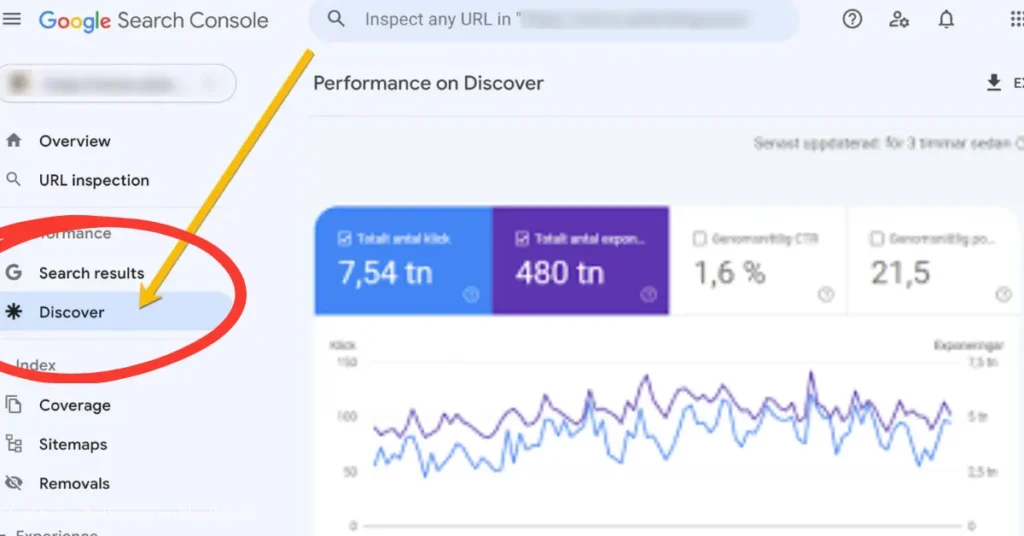
In this guide, we’ll follow the steps to help your Blogger blog rank higher on Google. By the end, you’ll have clear tips and a plan to bring in more organic traffic and climb up the search results. Let’s do this together!
How to Rank a Blogger Blog on Google
Ranking your Blogger blog on Google can be challenging, but it’s also very rewarding. This guide covers key SEO strategies to help you increase your blog’s visibility, from basic setup tips to advanced techniques. We’ll start by explaining how to rank your Blogger blog and site on Google by effectively using SEO, optimizing keywords, and ensuring everything is set up properly. Then, we’ll look at ways to boost the ranking of Blogspot blogs and websites in search engine results.
Next, we’ll dive into how to optimize your Blogger blog for SEO. This includes tips on creating great content, using metadata, and organizing labels. You’ll also learn how to rank higher organically on Google without relying on paid ads by focusing on long-tail keywords, building backlinks, and creating a solid content strategy.
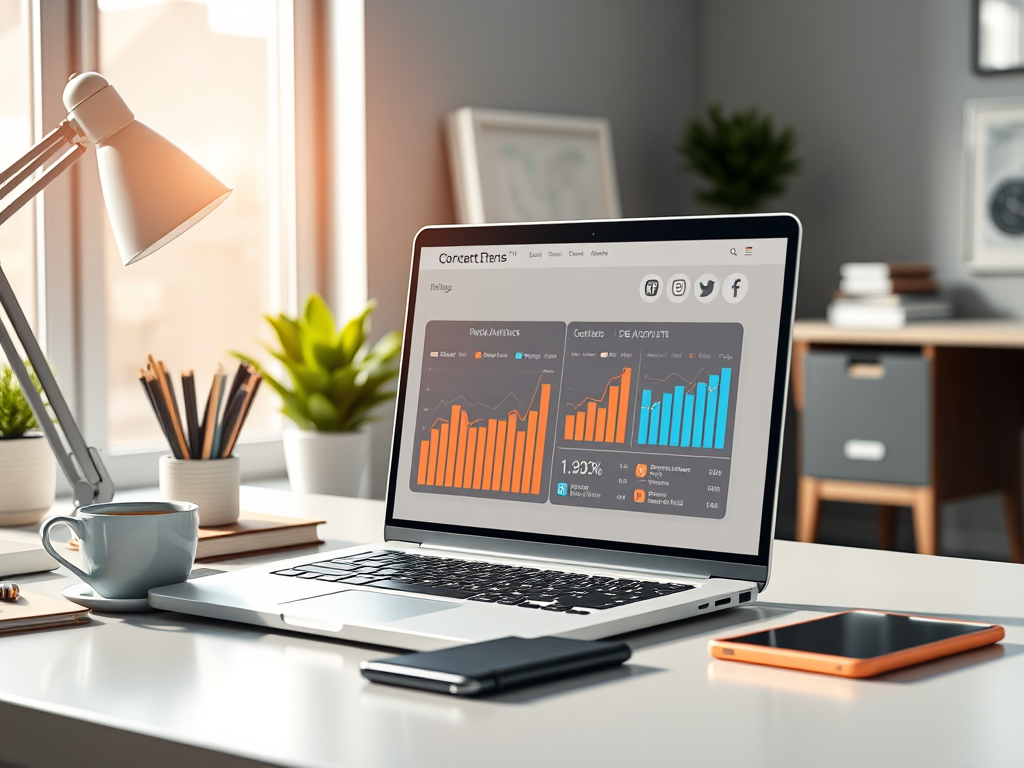
We’ll also cover how to reach the top of Google’s first page. This includes understanding Google’s ranking factors and using tools like Google Analytics and Search Console. Lastly, we’ll give you budget-friendly tips on ranking your Blogger site on a free domain, showing you how to get excellent results without spending on premium tools.
By following these actionable steps, you’ll be well on your way to boosting your Blogger blog’s performance on Google and attracting more organic traffic.
Understanding How to Rank a Blogger Blog on Google
When it comes to ranking on Google, Blogger blogs present both challenges and opportunities. Unlike platforms like WordPress, Blogger is a free and simple tool, often favored by beginners. However, it can be tough to compete with more customizable websites. To rank a Blogger blog and improve its visibility, it’s important to understand how Google’s algorithms interact with your content. Let’s explore what makes Blogger blogs unique in the SEO world and why optimizing for Google’s algorithm is essential.
What Makes Blogger Blogs Unique in the SEO Landscape?
Blogger blogs are different from other content management systems (CMS) in a few key ways. For one, Blogger doesn’t offer the same customization and flexibility that other platforms, like WordPress, provide. This can limit your SEO potential. However, Blogger’s simplicity is what makes it so attractive to beginners who want to start a blog without the complicated setup of more advanced platforms.

The key to improving your Blogger blog’s ranking is how well you optimize your content. While Blogger doesn’t have many advanced SEO tools, it does offer built-in features like customizable meta descriptions, labels (tags), and clean URL structures. These built-in options make it easier to optimize your blog, even with the limited customization choices.
However, to rank higher on Google, Blogger blogs often need extra effort. Google’s algorithms are sophisticated and prioritize high-quality, relevant content, backlinks, and a good user experience. Since Blogger doesn’t have premium plugins like WordPress, you’ll have to rely on organic methods, such as keyword targeting, building backlinks, and creating engaging content.
Importance of Optimizing for Google’s Algorithm
Google’s algorithm is always evolving to provide the best, most relevant results. Knowing how to optimize your Blogger blog for Google is crucial to improving its visibility. The key to ranking a Blogger blog successfully is following Google’s best practices for SEO and ensuring that your content aligns with Google’s preferences.
Optimizing your Blogger blog for Google involves focusing on several important factors:
- Keyword Research: To improve your blog’s ranking, start by researching keywords that your audience is likely searching for. Incorporate these keywords naturally in your blog titles, headers, meta descriptions, and throughout your posts.
- Content Quality: Google values fresh, engaging, and well-researched content. Blogs that provide value and answer reader queries tend to rank higher. By focusing on high-quality content, you increase your chances of ranking well on Google.
- Backlinking: Even though Blogger may lack some features, you can still build backlinks to your blog. Quality backlinks from reputable sites signal to Google that your content is valuable and relevant, boosting your ranking.
- Mobile Optimization: Google now prioritizes mobile-friendly websites in its rankings. Since most users browse on mobile devices, ensuring your Blogger blog is responsive and loads quickly on mobile can significantly improve your ranking.
By understanding the importance of optimizing your Blogger blog for Google, you’ll be better positioned to improve its visibility and attract more traffic. It’s not just about choosing the right keywords—it’s about creating content that is user-friendly, valuable, and follows Google’s guidelines for SEO success.
How to Rank a Blogger Website on Google: Important Settings Tips
Ranking your Blogger site on Google starts with a solid foundation. A well-configured Blogger site will make it easier for Google to index your content and improve its search visibility. In this section, we’ll go through key setup steps to ensure that your Blogger site is optimized for better rankings, including choosing between a custom domain and a Blogspot subdomain and configuring essential SEO settings.
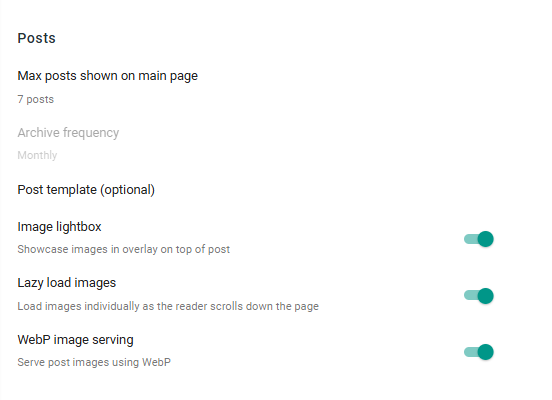
Setting Up a Custom Domain vs. a Blogspot Subdomain
One of the first decisions you’ll need to make when setting up your Blogger site is whether to use a custom domain or a Blogspot subdomain. While Blogspot offers a free subdomain (e.g., yourblog.blogspot.com), using a custom domain (e.g., yourblog.com) can improve your Google ranking significantly.
Benefits of Using a Custom Domain:
- Branding: A custom domain gives your blog a more professional appearance, helping build trust with visitors and search engines.
- SEO Benefits: Google tends to favor websites with custom domains because they appear more serious and credible. Over time, this can lead to better rankings.
- Flexibility: A custom domain offers more flexibility for integrating additional features, like custom email addresses and third-party tools, which can support your site’s overall management and SEO efforts.

On the other hand, a Blogspot subdomain is easy to set up and free, which makes it a good choice for beginners. However, Blogspot URLs (e.g., yourblog.blogspot.com) are not as optimized for SEO as custom domains. While you can still rank well with a Blogspot subdomain, having a custom domain is highly recommended if you’re serious about SEO and improving your Google ranking.
Configuring Basic SEO Settings in Blogger
Once you’ve selected your domain, the next step is configuring your Blogger site’s SEO settings. Proper SEO settings help Google understand and index your content effectively. Here are the essential SEO settings you should consider:
Customizing Meta Tags:
- Meta Title and Description: In the “Settings” section of Blogger, you can edit your meta title and description. These elements are crucial for SEO because they tell both users and search engines what your page is about. Ensure your title includes relevant keywords, and your description should provide a brief, compelling summary of your content to encourage clicks.
- Keywords: While meta keywords aren’t as important as they once were, adding them can still be helpful. Include the main keywords that match your blog’s theme, such as “how to rank Blogger blog on Google,” “SEO for Blogger site,” and others that are specific to your content.
Optimizing blog posts for SEO:
- Post Titles and Headers: Always optimize your post titles and headers (H1, H2, H3) with relevant keywords. These headings help Google understand the structure and relevance of your posts.
- Permalinks: Customize your post URLs (permalinks) to be short, descriptive, and SEO-friendly. Avoid long, complicated URLs. A clean, keyword-rich URL is better for both users and search engines.
Using labels effectively:
Labels (or tags) help organize your content and make it easier for search engines to crawl your blog. For each post, use relevant labels that describe the main topics of your content.
For example, if your post is about ranking a Blogger blog on Google, you might use labels like “Blogger SEO,” “Google ranking tips,” and “how to rank Blogger sites.” These labels improve your blog’s discoverability and enhance your SEO efforts.
Enabling Search Engine Indexing:
Make sure your blog is set to be indexed by search engines. In the Blogger settings under “Search Preferences,” enable the option to “Allow search engines to find your blog.” This step is essential for Google to index your content and help it rank higher.
Mobile Optimization:
Google prioritizes mobile-friendly websites, so ensure your Blogger blog uses a responsive template that adjusts to various screen sizes. A mobile-optimized blog enhances the user experience and can improve your rankings in search results.
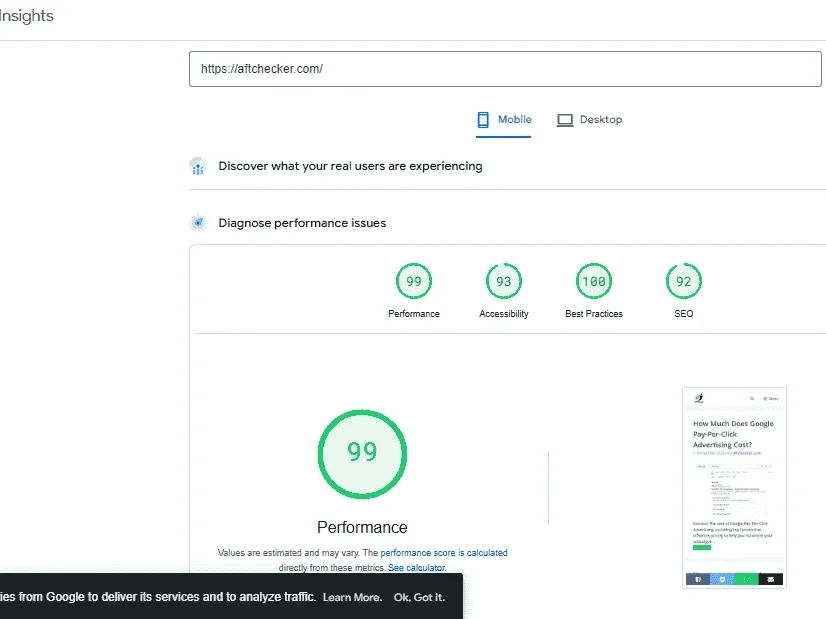
Enabling HTTPS:
Secure websites are given preference by Google. In Blogger, enable the “HTTPS Redirect” feature in the settings to ensure your blog uses HTTPS. This boosts both security and SEO, making your site more trustworthy in the eyes of both users and search engines.
By configuring these essential SEO settings, you’ll create a strong foundation for your Blogger site. These steps, combined with the right content strategy, will help improve your blog’s visibility and increase its chances of ranking higher on Google.
How to Rank Blogspot on Google: Strategies for Success
Ranking your Blogspot blog higher on Google can be challenging, but with the right strategies, it’s possible to increase your visibility and attract organic traffic. Although Blogspot has certain limitations compared to self-hosted platforms, optimizing key elements of your blog can significantly improve its chances of ranking higher. Here are some essential tips to help boost your Blogspot blog’s SEO and attract more visitors.
Choosing the Right Blog Niche to Attract Organic Traffic
The niche you choose for your Blogspot blog is critical for attracting organic traffic and improving your ranking on Google. Here are a few strategies to ensure you’re targeting the right audience:
Target Low-Competition, High-Demand Keywords:
To improve your chances of ranking well on Google, focus on keywords that are specific to your niche but not overly competitive. Tools like Google Keyword Planner and Ubersuggest can help you find keywords with high search volumes but low competition. By targeting long-tail keywords (phrases with three or more words), you can increase your chances of ranking on the first page of Google.
Provide valuable, unique content:
Content is king when it comes to SEO. To optimize your blog for search engines, focus on creating content that adds real value for your audience. This can include addressing common questions, solving problems, or providing in-depth guides on your niche. The more unique and useful your content, the more likely Google is to rank it higher in search results.
Consider Search Intent:
Understanding search intent—the reason behind a user’s search query—is crucial for crafting content that meets their needs. If people are searching for “how to improve Blogspot visibility,” make sure your content provides actionable tips and solutions that directly address this question. Content that matches search intent is more likely to rank higher and attract organic traffic.
Tips to Optimize Blogspot Templates for Faster Loading Times
For Google, page speed is an important ranking guideline. A faster website not only improves user experience but also helps your site rank better in search results. Here are some ways to optimize your Blogspot templates for quicker loading times:
Use lightweight templates:
A cluttered template with too many elements can slow down your site, which negatively impacts both SEO and user experience. Choose lightweight and responsive Blogspot templates that are clean and easy to navigate. A simple design will not only load faster but also offer a better user experience across all devices.
Compress Images:
Large image files are one of the main culprits of slow-loading websites. Before uploading images to your Blogspot site, use tools like TinyPNG or Compressor.io to compress them without sacrificing quality. Smaller image sizes will help reduce loading times and improve overall page speed.
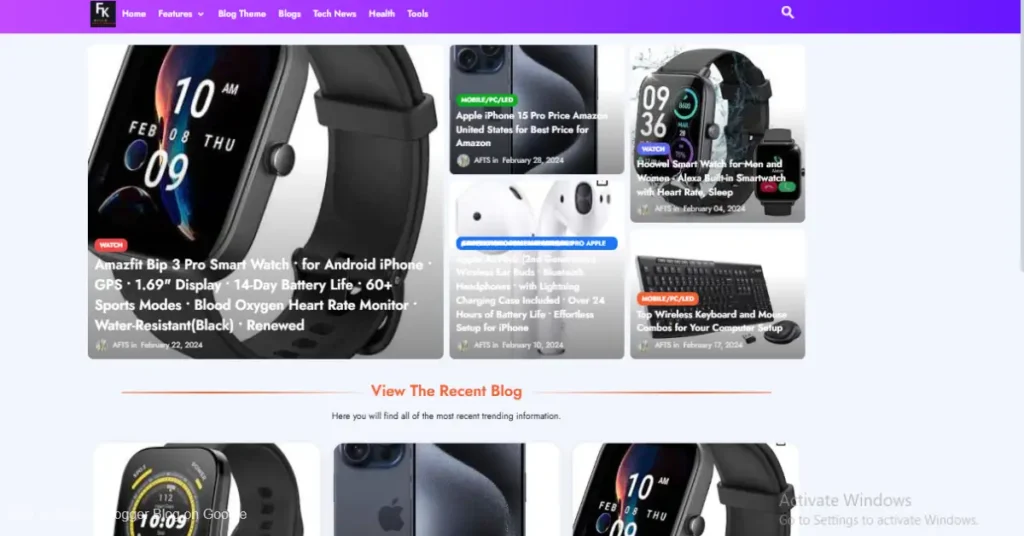
Minimize External Scripts:
External scripts, such as those used for social media buttons or analytics tracking, can slow down your site’s loading time. To improve your Blogspot blog’s performance, try to minimize the number of external scripts you use. Where possible, use embedded versions of scripts or opt for asynchronous loading to avoid delaying page rendering.
Enable Browser Caching:
Browser caching stores frequently accessed resources (like images and scripts) in the user’s browser, so they don’t need to be loaded every time someone visits your site. By enabling browser caching, you can speed up the loading process for return visitors. You can enable caching by editing the HTML code of your Blogger template or using third-party tools.
Avoid Too Many Ads:
While ads are a great way to monetize your blog, too many ads can slow down your site. Ads that are not optimized can impact page speed and user experience. Limit the number of ads on your site and place them strategically without interfering with your blog’s performance.
Use Content Delivery Networks (CDNs):
If your Blogspot blog includes multimedia content like images or videos, using a Content Delivery Network (CDN) can help speed up delivery times. CDNs distribute content across various servers globally, ensuring that visitors can access resources more quickly. Although Blogspot doesn’t natively support CDNs, you can integrate third-party CDNs to deliver content faster.
By applying these tips for improving page speed and optimizing your Blogspot blog, you can enhance its SEO and increase your chances of ranking higher on Google. Fast-loading pages provide a better experience for your visitors and improve your blog’s overall performance, leading to more organic traffic.
How to Do SEO for Blogger Blog: Beginner-Friendly Tips
Optimizing your Blogger blog for search engines can feel overwhelming, but by following a few simple steps, you can start boosting your SEO and ranking higher on Google. Here are some beginner-friendly, free SEO tips that will help improve your Blogger blog’s performance without costing you a dime.
Writing SEO-Friendly Titles and Meta Descriptions
Your blog’s title and meta description are the first things users and search engines notice. These elements play a crucial role in whether or not users click on your blog post from search results. Here’s how to optimize them for both search engines and user engagement:
Craft descriptive, keyword-rich titles:
Your title should not only be catchy but also contain relevant keywords. For example, if you’re writing a post on how to improve Blogger blog traffic, a title like “How to Drive More Traffic to Your Blogger Blog: Proven SEO Tips” works well. This places your keyword early in the title, making it easier for search engines to identify your content.

Keep your titles concise, between 50 and 60 characters, so they don’t get cut off in search results. Including primary keywords early helps with indexing.
Write engaging meta descriptions:
The meta description is the short text snippet that appears under your title in search results. It’s your opportunity to convince users to click on your blog. A good meta description should clearly describe the value of your post while incorporating target keywords. For optimal display, aim for 150–160 characters.
For example: “Discover practical SEO advice for Blogger blogs to increase rankings and generate natural traffic using simple tactics.”
Be sure to highlight the benefits of the content to entice clicks while maintaining keyword relevance.
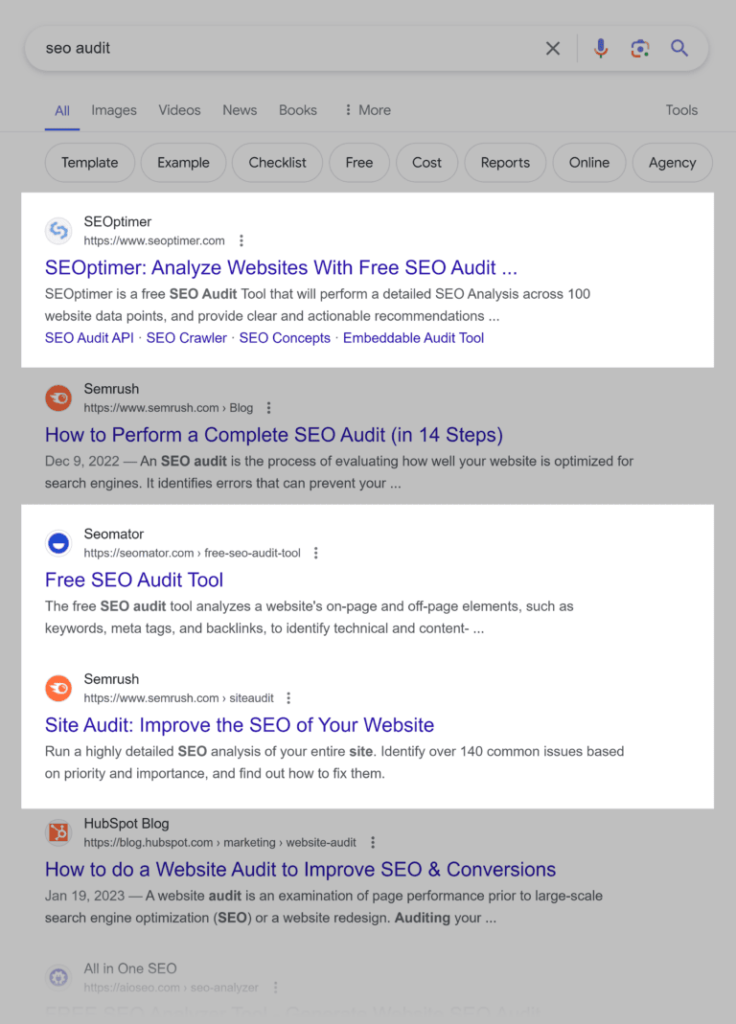
Avoid keyword stuffing:
While keywords are important, avoid overloading your title or meta description with them. Google prefers natural-sounding content that reads well. Ensure that your keywords flow smoothly and are contextually relevant.
Using Labels Effectively for Internal Categorization
Labels (also known as tags) are a great way to improve SEO with Blogger. They help categorize your posts, making it easier for search engines and users to find related content. Here’s how to use labels strategically:
Choose descriptive labels:
When labeling your posts, be specific and use keywords related to the topic. For example, for a post about Blogger SEO, you might use labels like “Blogger SEO,” “SEO tips,” or “SEO for Blogger blogs.” This helps search engines understand the content of your post and increases your chances of ranking for those topics.
Avoid generic labels or overusing them. Stick to keywords that are closely tied to your content.
Group Related Content:
Labels also help group related posts together, which improves user experience and encourages visitors to stay on your blog longer. For example, use a label like “Blogger SEO Tips” to connect all posts on that topic. It also strengthens internal linking, which is an important SEO factor.
Optimize the label widget:
Blogger allows you to add a label widget to your sidebar. This widget helps visitors navigate your blog by topic. Be strategic and limit the number of labels shown to prevent overwhelming users. Show only your most important and high-traffic topics to keep your blog organized.
Additional Free SEO Tips for Blogger Blogs
Here are a few more tips to help improve your Blogger SEO for free:
Mobile-Friendly Design:
Google prioritizes mobile-friendly websites, so make sure your Blogger template is responsive and works well on all devices. Blogger’s default templates are mobile-optimized, but check to ensure they look great on phones and tablets.
Optimize Blog Post URLs:
After creating a post, customize the URL to include your target keywords. For example, a post on improving SEO could have a URL like “yourblog.com/seo-tips-for-blogger.” Clean, keyword-rich URLs are easier for search engines to index and rank.
Optimize Images:
Before uploading images to Blogger, ensure they’re optimized. Use descriptive file names and alt tags, as Google can’t “see” images but can read alt text. Including keywords in the alt text helps your images rank in Google Image Search, giving your blog an SEO boost.

Add Social Sharing Buttons:
While social media signals aren’t a direct ranking factor for Google, sharing content across social platforms can drive traffic to your blog. This can indirectly help your SEO by bringing in more visitors. Adding social sharing buttons makes it easy for readers to share your content.
By following these simple, free SEO tips for Blogger, you can enhance your blog’s visibility and attract more organic traffic. Optimizing your titles, meta descriptions, labels, and images will help you rank better in Google search results. Implementing these beginner-friendly techniques is a great way to get started on improving your Blogger blog’s SEO without any cost.
How to Make Your Blog Rank Higher on Google: Content is King
When it comes to ranking higher on Google, content is undeniably king. High-quality content not only attracts readers but also signals to search engines that your blog is valuable and deserves a top position in search results. To improve your blog’s ranking on Google, you need to create engaging, valuable content optimized with advanced SEO techniques. Here’s how you can achieve this.
Writing High-Quality, Evergreen Content
Creating high-quality content is the cornerstone of SEO. To truly stand out and rank higher on Google, your content must be both relevant and evergreen. Long-term traffic is ensured by evergreen content, which is beneficial over time. Google rewards blogs that consistently provide content that answers users’ questions, offers solutions and establishes authority in a niche.
Focus on Value and Relevance:
To boost your ranking on Google, ensure your posts address specific questions or problems your audience faces. Research to understand your audience’s pain points and create blog posts that provide actionable solutions. For example, guides, tutorials, and lists of resources add immense value. The more valuable your content is, the higher the chances it will rank.
Evergreen content—such as posts like “How to Start a Blog” or “A Beginner’s Guide to SEO”—remains relevant for a long time, continuing to attract search traffic long after publication. Writing evergreen content is a strategy that builds sustained traffic over time.

Consistency and Depth:
Google prefers long-form, in-depth content (typically over 1,500 words), as it tends to provide more comprehensive information. However, don’t just focus on length; ensure the content is genuinely valuable. Thoroughly cover the topic, provide detailed answers, and include real-life examples. Deeper content not only helps it rank but also encourages sharing and linking, which are key factors in Google’s ranking algorithm.
User Engagement and Readability
Engagement is another critical factor that can affect your blog’s ranking. Content that actively engages readers is more likely to rank well. Ensure your posts are well-structured, easy to read, and visually appealing. Use headers, bullet points, and short paragraphs to break up long blocks of text. You can also encourage comments, social shares, and interaction, as these engagement metrics signal to Google that your content is valuable.
Importance of Using LSI (Latent Semantic Indexing) Keywords
To enhance your blog’s visibility, another advanced SEO technique is the use of LSI (latent semantic indexing) keywords. These are terms and phrases related to your main keyword, helping Google understand the context and relevance of your content. Using LSI keywords makes it easier for search engines to match your post with various search queries.
What Are LSI Keywords and Why Do They Matter?
LSI keywords are conceptually related to your main keyword but are not direct synonyms. For example, if your main keyword is “SEO tips,” related terms such as “search engine optimization,” “Google ranking,” “on-page SEO,” and “link building” can be considered LSI keywords. By including these related terms in your content, you signal to Google that your blog covers a broad topic.
Using LSI keywords increases your chances of ranking for a wider array of related searches, boosting your visibility on Google. Including these terms makes your content appear more authoritative and relevant to readers and search engines alike.
How to Find LSI Keywords:
You can find LSI keywords by typing your main keyword into Google’s search bar and looking at the “Related Searches” section at the bottom of the results page. This provides a great list of semantically related terms. Tools like Google Keyword Planner, Ubersuggest, and LSIGraph also help generate keyword suggestions based on your main keyword.

Another method is by analyzing the top-ranking pages for your target keyword. These pages often include LSI keywords in their content. Including these related terms naturally in your content will help Google match your blog with a broader range of search intents.
Strategic Placement of LSI Keywords:
Once you’ve gathered your LSI keywords, place them strategically in your content. Use them in subheadings, body text, and image alt tags. Avoid keyword stuffing—incorporate these keywords naturally into the context. Google rewards readable content that uses keywords naturally. Don’t force LSI keywords where they don’t belong, but let them enhance your content’s depth and relevance.
Advanced SEO Tips for Blogs
Besides creating high-quality content and using LSI keywords, other advanced SEO techniques will help your blog rank higher on Google.
Optimize for Featured Snippets:
Featured snippets are brief answers pulled from web pages and shown at the top of search results. To optimize for featured snippets, structure your content so that it directly answers common questions with clear, concise paragraphs or bullet points. Featured snippets are highly valuable, as they drive visibility and traffic.
Focus on Core Web Vitals:
Google’s ranking algorithm now includes Core Web Vitals, which are factors that affect page experiences, such as loading speed, interactivity, and visual stability. Make sure your blog is mobile-friendly and loads quickly to improve its ranking. These factors are increasingly important for ranking and user satisfaction.
Build Backlinks:
High-quality backlinks from authoritative websites are crucial for ranking higher on Google. Backlinks are like endorsements for your content. To gain backlinks, consider guest posting, collaborating with influencers, and reaching out to other bloggers in your niche. The more high-quality backlinks you have, the more Google will view your blog as a trusted source of information.
Tool backlinks
By focusing on high-quality, evergreen content, using LSI keywords, and employing advanced SEO techniques like optimizing for featured snippets and building backlinks, you can significantly boost your blog’s ranking on Google.
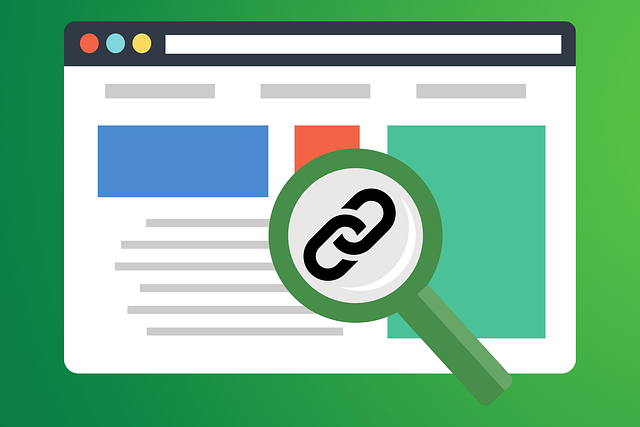
Remember, SEO is an ongoing process. Regularly update your content, optimize older posts, and stay updated on Google’s algorithm changes to ensure your blog remains competitive and consistently ranks high in search results.
How to Rank Higher on Google Organically Without Ads
Achieving a higher ranking on Google organically—without spending on ads—is not only possible but also highly rewarding. Organic rankings offer sustained visibility, attract targeted traffic, and build long-term credibility. The key lies in crafting a strategy that focuses on delivering value, optimizing content, and leveraging SEO best practices. Here’s how you can master organic rankings with actionable tips.
1. Leverage Long-Tail Keywords for Organic Reach
What Are Long-Tail Keywords?
Long-tail keywords are specific search phrases that usually consist of three or more words. These keywords often have lower competition but higher intent, making them ideal for targeting niche audiences. For instance, instead of a generic keyword like “SEO,” you could use “SEO tips for new bloggers in 2024.”
Why They Work:
- They attract users with a clear intent, such as solving a problem or answering a question.
- They face less competition, increasing your chances of ranking higher.
- They often have higher conversion rates as users searching for long-tail keywords are further along the buying or decision-making process.
How to Implement Them:
- Use tools like Google Keyword Planner, AnswerThePublic, and Ubersuggest to find targeted long-tail keywords.
- Naturally include these keywords in the headings, blog names, meta descriptions, and body of your writing.
- Write blog posts tailored to specific queries, such as “How to Rank Higher on Google Without Paying for Ads.”
Pro Tip: Structure your content around answering specific search intents, like “how to increase organic traffic for a small business,” to better align with user needs.
2. Build Quality Backlinks
strongest ranking signals. They show Google that your content is credible and valuable. Quality backlinks can significantly boost your site’s domain authority and search rankings.
Strategies to Build Backlinks:
- Guest Posting:
- Write articles for high-authority blogs in your niche and include a link back to your site.
- For example, contribute to a marketing blog with a post titled “Actionable Strategies to Rank Higher on Google Organically,” linking to a related resource on your website.
- Focus on websites with a good Domain Authority (DA) and avoid low-quality or spammy sites.
- Content Collaboration:
- Partner with other creators for co-authored blog posts, interviews, or resource sharing.
- For instance, collaborate with a digital marketing expert to create a comprehensive guide on organic ranking. This not only earns backlinks but also expands your reach to their audience.
- Create link-worthy content:
- Publish resources like in-depth guides, infographics, or original research that other websites would want to reference.
- A well-researched article on “How to Optimize a Website for Organic Searches” is more likely to be cited by others, earning you natural backlinks.
Pro Tip: Monitor your backlinks using tools like Ahrefs or SEMrush to ensure they come from quality sources. Disavow harmful links that might negatively impact your rankings.
3. Optimize Your Website for Search Engines
Technical SEO plays a vital role in how Google perceives your website. A well-optimized site improves user experience (UX), reduces bounce rates, and aligns with search engine requirements.
Improve Technical SEO:
- Speed Up Your Website:
- Compress images, enable browser caching, and use a Content Delivery Network (CDN) to improve loading speed.
- Google favors fast-loading websites, and users are less likely to leave if your site loads within 2-3 seconds.
- Ensure Mobile-Friendliness:
- When utilizing mobile-first indexing, a responsive design is crucial. Use Google’s Mobile-Friendly Test to see if your website works on mobile devices.
Enhance On-Page SEO:
- Optimize titles, meta descriptions, and headers with relevant keywords like “rank higher on Google organically.”
- Use descriptive image alt texts and include keywords naturally for better image search rankings.
- Internal linking keeps users on your site longer and helps Google crawl and index your pages more effectively.
Encourage User Engagement:
- Use engaging, easy-to-read content with clear calls to action (CTAs).
- Interactive elements like polls, videos, or quizzes can increase time spent on your site, signaling to Google that your content is valuable.
- Reduce bounce rates by linking readers to related articles. For example, include a “Read Next” section with links to relevant posts like “How to Optimize Blogs for Search Intent.”
4. Consistently Publish High-Quality Content
Google prioritizes fresh, relevant, and high-quality content. Regular updates signal to search engines that your site is active and valuable.
How to Create Content That Ranks:
- Focus on E-E-A-T (Experience, Expertise, Authoritativeness, Trustworthiness):
- Share your personal experiences, expertise, or case studies to establish authority.
- Write detailed and fact-checked articles to build trust with readers and search engines alike.
- Match Search Intent:
- Understand what users want—informational, navigational, or transactional content—and tailor your posts accordingly.
- For example, if users are searching for “best organic SEO tips,” ensure your article answers their query directly and thoroughly.
- Use Structured Data:
- Implement schema markup to help Google understand your content better and improve your chances of appearing in rich snippets.
5. Promote Your Content on Social Media
Although social signals (likes, shares, and comments) don’t directly affect rankings, they help drive traffic and increase content visibility.
How to Maximize Social Media Impact:
- Share your content across multiple platforms like Facebook, LinkedIn, and Twitter.
- By answering comments and promoting conversations about your material, you may interact with your audience.
- Use visually appealing graphics and click-worthy headlines to increase engagement.
Ranking higher on Google organically is a long-term commitment that requires consistent effort, strategic planning, and patience. By focusing on long-tail keywords, building high-quality backlinks, optimizing your website, and creating user-focused content, you can steadily improve your visibility without relying on ads.
Start small, measure your progress, and refine your strategy as needed. Over time, these efforts will pay off with increased organic traffic, better rankings, and sustainable growth. Now is the time to take action—optimize your website and watch your rankings soar!
How to Rank a Website on Google’s First Page
Getting your website to the coveted first page of Google requires a combination of strategic SEO practices and a clear understanding of Google’s ranking factors. Below are proven techniques to help you achieve this goal while targeting the right keywords.
Understanding and Optimizing for Featured Snippets
Featured snippets, also known as position zero, are a powerful way to boost visibility. These are concise answers that Google displays at the top of search results for specific queries.
- How to Optimize for Featured Snippets:
- Format content in listicles, tables, or Q&A styles. For instance, answering a query like “how to get a website on Google’s first page” with a bullet list increases your chances of being featured.
- Use keywords like “top-ranking website strategies” and “improve first-page Google ranking” naturally in the snippet-worthy section of your content.
- Why Featured Snippets Matter:
- They position your website as an authoritative source, even if it isn’t ranked #1 organically.
- They drive higher click-through rates by offering users a preview of your content.
Tracking Progress Using Google Analytics and Search Console
Monitoring your SEO efforts is essential to improving and maintaining first-page rankings.
- Using Google Analytics:
- Track key metrics like organic traffic, bounce rate, and user engagement. Identify pages that perform well and replicate their success for other content.
- Analyze the keywords driving traffic to ensure they align with terms like “get a website on Google’s first page” and “top-ranking website strategies.”
- Using Google Search Console:
- Check for crawl errors, optimize XML sitemaps, and monitor keyword performance. Make use of this information to enhance the visibility of your content.
How to Rank Blogger Website for Free Domain: Budget-Friendly Tips
Optimizing a Blogger website with a free domain might seem challenging, but with the right strategies, you can still achieve impressive rankings. These tips focus on maximizing your SEO efforts without spending money.
Using Free Tools Like Ubersuggest for Keyword Research
Keyword research is the foundation of any successful SEO strategy, and free tools like Ubersuggest can help you identify valuable keywords.
- How to Use Ubersuggest:
- Search for terms like “free Blogger SEO tips” or “rank free Blogger domain higher” to discover low-competition keywords with high search volume.
- Use these keywords in your titles, meta descriptions, and content to attract more organic traffic.
- Why Free Tools Are Effective:
- They provide insights into search trends, helping you target the right audience without investing in expensive software.
Promoting Your Blog Through Social Media and Forums
Social media and forums can drive significant traffic to your free Blogger website while building backlinks and engagement.
- Tips for Promotion:
- Share blog posts on platforms like Facebook, Instagram, and Pinterest, optimizing your captions with keywords like “Blogger website ranking tricks” and “free Blogger SEO tips.”
- Engage in niche forums like Reddit or Quora. Answer questions related to your blog’s content, including a link to your post where relevant.
Common Mistakes That Can Hurt Blogger Blog Rankings
Even small mistakes can drastically impact your blog’s ranking on Google. Avoid these pitfalls to maintain and improve your SEO performance.
Overusing Keywords and Creating Duplicate Content
Keyword stuffing and duplicate content are two common errors that can harm your blog’s rankings.
- How to Avoid Overusing Keywords:
- Naturally incorporate primary keywords into your article, such as “avoid SEO mistakes for Blogger.” Instead of repeating the same keyword, use variations to improve readability and relevance.
- Focus on providing value rather than forcing keywords into every sentence.
- Preventing Duplicate Content Issues:
- Regularly audit your blog to identify and remove duplicate content. Tools like Copyscape can help ensure your content remains unique.
Neglecting Mobile-Friendliness and Site Speed Optimization
With most users accessing content via mobile devices, having a responsive and fast-loading site is critical.
- Improving Mobile-Friendliness:
- Use responsive Blogger templates and test your site’s mobile usability with Google’s Mobile-Friendly Test tool.
- Optimize images and videos to ensure faster loading times, targeting keywords like “improve Blogger blog performance.”
- Enhancing Site Speed:
- Minimize the use of heavy plugins and enable browser caching. A faster site not only ranks better but also enhances user experience.
Actionable Steps to Keep Improving Your Blogger Blog’s Ranking
SEO is a continuous effort rather than a one-time event. Regularly refining your strategy can help you maintain and improve your blog’s ranking over time.
Regularly Updating Old Content with New Insights
Refreshing old posts with updated information ensures they remain relevant and valuable to readers.
- Why Updating Content Matters:
- Google values fresh content, so regularly updating your blog improves its chances of ranking higher.
- For instance, revisit posts about “how to rank Blogger blog on Google” and include the latest SEO trends or strategies.
Monitoring Competitors and Adapting to Trends
Keeping an eye on your competitors can provide valuable insights into what works in your niche.
- How to Monitor Competitors:
- Use tools like SEMrush or Ahrefs to analyze competitors’ top-performing pages. Look for opportunities to improve your content with targeted keywords like “Blogger website ranking tricks” or “rank free Blogger domain higher.”
- Adapt to new trends, such as voice search or video content, to stay ahead of the curve.
Conclusion
To summarize, ranking your Blogger blog on Google requires consistent effort, strategic keyword targeting, and regular optimization. From understanding featured snippets to leveraging free tools and avoiding common mistakes, each step builds a stronger foundation for your blog’s success.
Final Encouragement: Consistency is key to ranking your Blogger blog on Google. When you start small, you’ll eventually notice big results!
My name is M. Ali Sher. I am from Pakistan. I work on blogging, SEO, WordPress, and many other topics. I have about two years of experience in this field. All the information on this website related to blogging, SEO, WordPress, and Earning Money online is my personal experience. I have published many tools on this site, and some are yet to be released. They will also be available on this website soon. I have been working in blogging and SEO for a long time and as I told you, I have a lot of knowledge about it, so I want to share my knowledge with you. So that you guys can also start earning money from blogging and SEO.



Thank you sir
You’re welcome! 😊